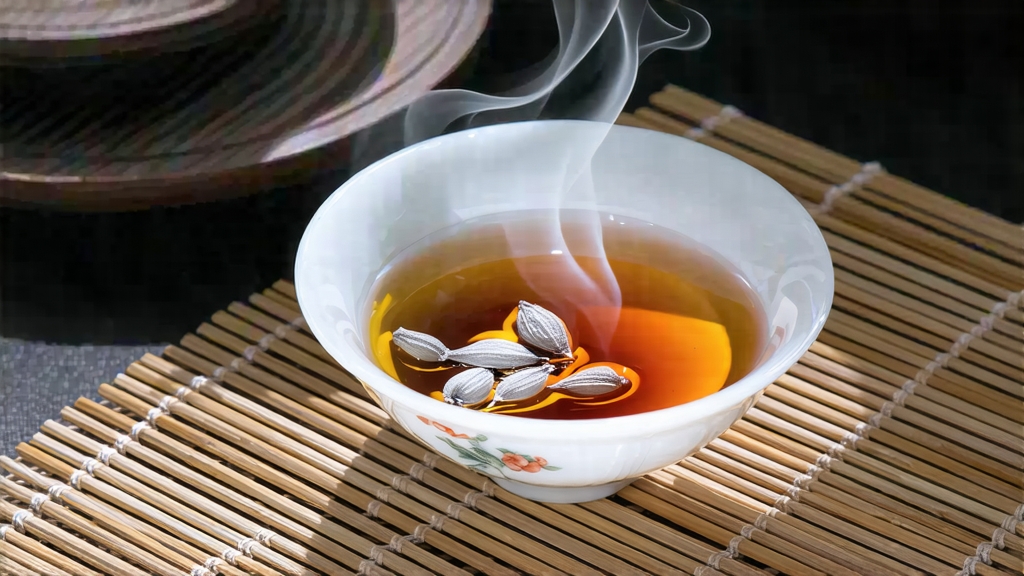
Among the six great families of Chinese tea, white tea is the least theatrical yet the most elusive, and within that understated clan Bai Hao Yin Zhen—“Silver Needle”—sits on the throne. To the uninitiated it looks like a handful of dried pine needles that forgot to turn brown; to the initiated it is moonlight trapped in a cup, a sip of chilled silk that carries the scent of mountain mist and the memory of Song-dynasty court poets. This essay invites the international reader to follow the slender silver thread from its myth-shrouded birth in Fujian’s coastal mountains to the quiet ritual that coaxes its fragrance into life, and finally to the tasting table where nuance is measured in heartbeats.
-
Historical echoes
White tea’s written history begins around 1796, when growers in northeast Fujian first exported “foreign tribute tea” made from the unopened buds of the Fuding Da Bai cultivar. Yet folklore pushes the timeline back to the early Song (960-1279), when imperial tea cakes stamped with dragon motifs were said to contain “tiny silver sprouts” that shimmered when the cake was broken. The transition from compressed cake to loose needle happened during the Qing, when merchants discovered that buds sun-withered then baked over charcoal could survive the long sea voyage to Southeast Asia and still arrive smelling like fresh orchards. By 1891 Silver Needle had become one of China’s first teas sold by grade rather than garden name, establishing a benchmark that still governs global white-tea pricing today. -
Terroir: two counties, one needle
Authentic Bai Hao Yin Zhen is produced in only two micro-regions: Fuding and Zhenghe, both in Fujian province. Fuding sits closer to the East China Sea; its red granite soils, morning fog and strong ultraviolet light create buds that are plump, downy and high in amino acids, yielding a liquor that is peach-sweet and almost saline. Zhenghe, higher and more continental, gives needles that are slightly slimmer but richer in polyphenols, translating into a deeper, hay-like aroma and a longer, quince-like finish. Purists can distinguish the two by the length of the tiny “fish-tail” at the base of the bud: Fuding’s curves like a comma, Zhenghe’s is straighter. Climate change is already shifting harvest two weeks earlier than in the 1990s, making each spring a race between the picker and the thermometer. -
Cultivar and plucking etiquette
Only two camellia sinensis cultivars are sanctioned: Fuding Da Bai (“Big White”) and Zhenghe Da Bai. The bushes flush explosively for about ten days in late March, when each bud reaches 2.5–3 cm and still wears its pearl-colored coat. Pickers use thumbnail, not blade, to avoid the “red edge” that oxidation would later betray. The daily harvest must finish before 9 a.m., while dew is still intact; any later and surface temperature rises, accelerating enzymatic browning. Experienced crews work in pairs: one lifts the branch, the other plucks with a soft click that sounds like rain on nylon. A full kilogram of finished Silver Needle represents 30,000 individual buds—roughly three hours of focused human labour. -
Craft: the art of doing almost nothing
Unlike green tea that is pan-fired or oolong that is bruised, white tea is the minimalist’s masterpiece: wither, slow-bake, sort, pack. Yet within that simplicity hides a labyrinth of micro-decisions.
- Outdoor withering: buds are laid on woven bamboo trays 2 cm thick and placed under a 45-degree morning sun for 20–40 minutes. The goal is not to dry but to soften cell walls so that grassy aldehydes can evaporate.
- Indoor withering: trays move to a screened corridor where temperature is held at 22 °C and relative humidity at 65 %. For 36–48 hours the buds lose moisture in slow motion while non-enzymatic oxidation generates honey, melon and cucumber notes. Masters gauge readiness by ear: when a handful of buds shaken gently emits a sound like rustling silk, the moisture has reached 20 %.
- Charcoal baking: traditionally done in a squat clay oven fueled by longan-wood charcoal. The fire is smothered with ash until surface temperature hovers at 40 °C. Needles are tumbled in paper-thin bamboo sieves for three minutes, rested for thirty,